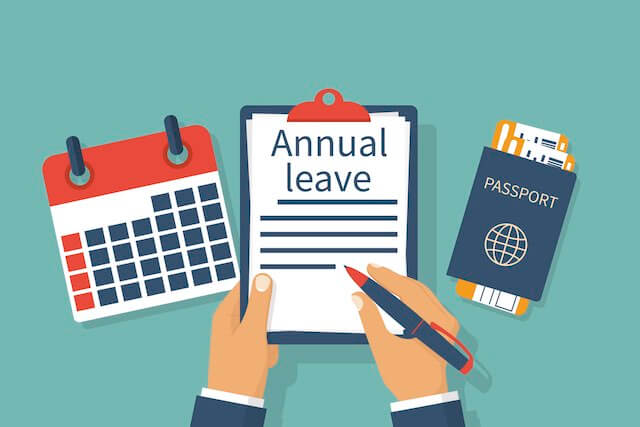2023 will have an extra pay period and this may impact the “use or lose” annual leave for federal employees according to an announcement from the Office of Personnel Management.
OPM explains the details of the situation in a June 26, 2023 memo. The 2023 leave year began on January 1, 2023, and will end on January 13, 2024. This means that 2023 will have 27 pay periods instead of 26.
Federal employees will accrue an additional 4, 6, or 8 hours of annual leave in the 2023 leave year based on each individual employee’s annual leave accrual rate. Full-time federal employees who have at least 15 years of service accrue a full day’s worth (8 hours) of annual leave each pay period.
Annual Leave Accrual Rates for Federal Employees
These are the current annual leave accrual rates as published by OPM:
| Employee Type | Less than 3 years of service * | 3 years but less than 15 years of service * | 15 or more years of service * |
|---|---|---|---|
| Full-time employees | ½ day (4 hours) for each pay period | ¾ day (6 hours) for each pay period, except 1¼ day (10 hours) in last pay period | 1 day (8 hours) for each pay period |
| Part-time employees | 1 hour for each 20 hours in a pay status | 1 hour for each 13 hours in a pay status | 1 hour for each 10 hours in a pay status |
| Uncommon tours of duty | (4 hours) times (average # of hours per biweekly pay period) divided by 80 = biweekly accrual rate. | (6 hours) times (average # of hours per biweekly pay period) divided by 80 = biweekly accrual rate.** | (8 hours) times (average # of hours per biweekly pay period) divided by 80 = biweekly accrual rate. |
| SES, Senior Level (SL), and Scientific or Professional (ST) positions, and employees in equivalent pay systems, as determined by OPM | 8 hours for each pay period, regardless of years of service. (See Extension of Higher Annual Leave Accrual Rate to SES and SL/ST Equivalent Pay Systems fact sheet) | ||
* See Creditable Service for Leave Accrual. A change in accrual rate takes effect at the beginning of the pay period after the pay period an employee completes the required period of service.
** In computing leave accrual for uncommon tours of duty, the accrual rate for the last full pay period in a calendar year must be adjusted to ensure the correct amount of leave is accrued.
Use Extra Annual Leave in 2023 or Lose It
According to OPM, even though there is an extra pay period in 2023, federal employees still must use any annual leave above the maximum leave ceiling (“use or lose”) before the final day of the leave year which is January 13, 2024, for most federal employees. Any accrued annual leave in excess of the maximum allowed by law will be forfeited if not used by the final day of the leave year.
For most federal employees, the maximum carryover ceiling on annual leave is 240 hours. It is 360 hours for federal employees stationed overseas and 720 hours for members of the Senior Executive Service (SES) and senior level (SL) and scientific and professional employees.
An agency may restore annual leave that was forfeited due to an exigency of the public business or sickness of the employee only if the annual leave is scheduled in writing before the start of the third biweekly pay period prior to the end of the leave year (i.e., by December 2, 2023).
FedSmith.com author Ralph Smith offered this description and advice to federal employees regarding planning for their “use or lose” annual leave:
Be careful in tracking your annual leave. If you do not use any annual leave in excess of the maximum of 240 hours (for most federal employees) during the leave year, you are likely to lose it. It will just disappear.
This is often referred to in federal offices as “use or lose” leave. If you do not use your “excess” leave before the end of the leave year, you may find you have just given away the remaining portion of this employee benefit.
The maximum number of hours that you can accumulate during the course of a year and carry over for use in the following year is 240 hours for most federal employees. In other words, if you do not use some of your annual leave during the current year, you can add up to 240 hours for use in the following leave year.
While some employees complain about this limitation, this is a lot of paid leave (about six weeks). If you are planning a long vacation or need time away from work, you can add these 240 hours to the amount of leave you will accumulate in the next year as part of your planning process.
See his article Federal Employees: Making the Most of Your Annual Leave for additional helpful information about your annual leave benefits.
26 Pay Dates for Most Federal Employees in 2023
To further complicate the situation, the OPM memo notes that most federal employees will have 26 pay dates in 2023 even though there are 27 pay periods. Leave accrual is affected by the number of pay periods, not the number of paydays, in a calendar year. This means that any regular payments or payroll deductions that are made each pay day will also remain at 26 in 2023.
Any federal employees who have questions or need assistance with their pay and leave situation should contact their agency human resources office and/or payroll office for assistance.





